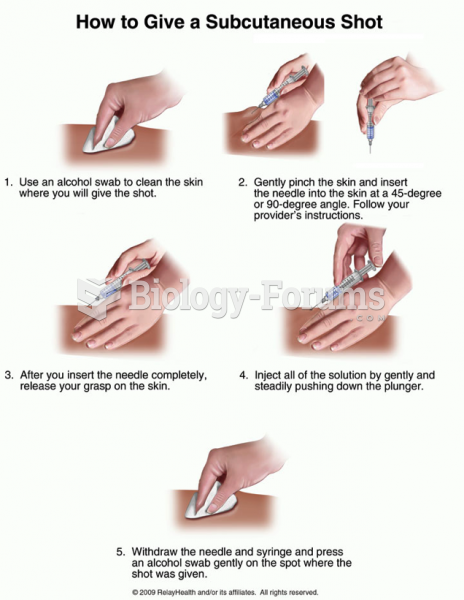|
|
|
The lipid bilayer is made of phospholipids. They are arranged in a double layer because one of their ends is attracted to water while the other is repelled by water.
Thyroid conditions cause a higher risk of fibromyalgia and chronic fatigue syndrome.
Nearly 31 million adults in America have a total cholesterol level that is more than 240 mg per dL.
There can actually be a 25-hour time difference between certain locations in the world. The International Date Line passes between the islands of Samoa and American Samoa. It is not a straight line, but "zig-zags" around various island chains. Therefore, Samoa and nearby islands have one date, while American Samoa and nearby islands are one day behind. Daylight saving time is used in some islands, but not in others—further shifting the hours out of sync with natural time.
More than 4.4billion prescriptions were dispensed within the United States in 2016.







